These European views from above will take your breath away
Stunning sky-high shots
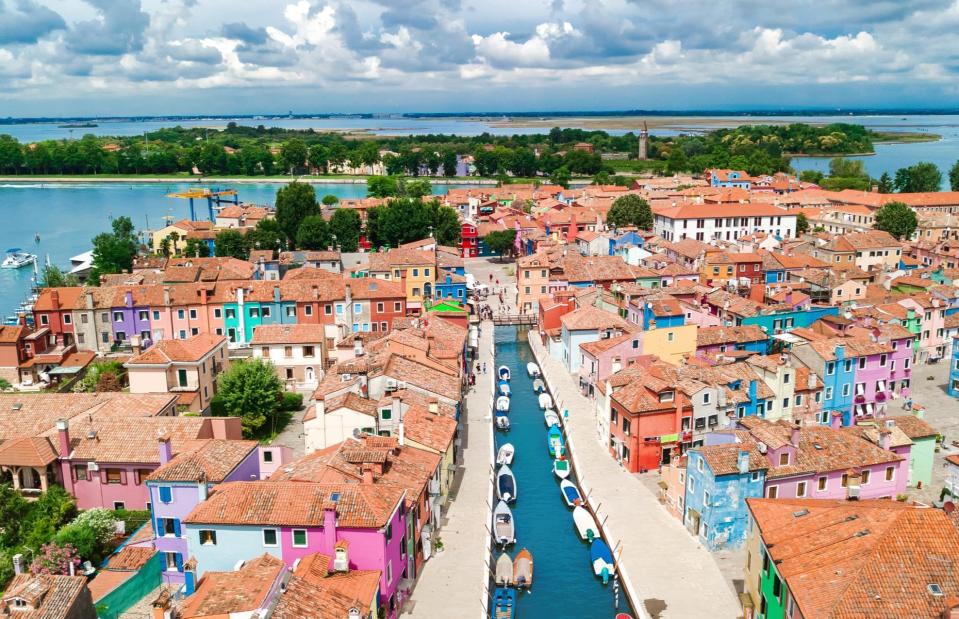
JaySi/Shutterstock
Europe’s dazzling cityscapes, abundant national parks and ancient monuments take on an entirely different appeal when viewed from up high. We’ve rounded up the most mesmerising drone and aerial photographs of striking locations around Europe, from famous landmarks to lesser-known beauty spots – and even the world's longest treetop walkway – to showcase the best that the continent has to offer.
Tower Bridge, London, UK
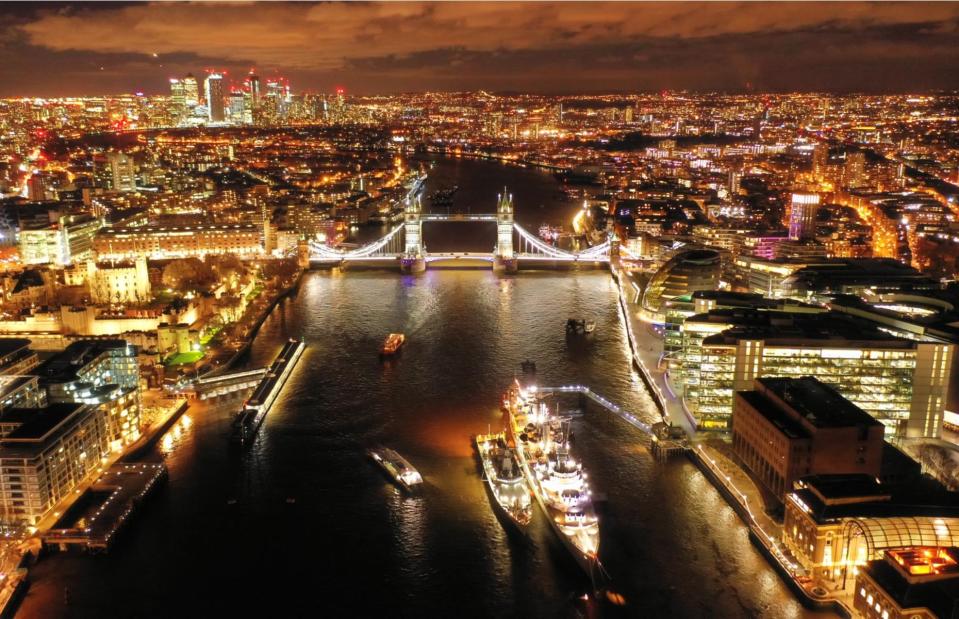
Aerial-motion/Shutterstock
London’s iconic Tower Bridge was built at the end of the 19th century as a result of an open competition that saw more than 50 designs submitted. The winning entry, which consists of a high-level and low-level walkway sandwiched between two neo-Gothic towers, has become a beloved part of the city’s skyline ever since. Seen from a drone-eye view in this night-time photograph, the cityscape is a seamless fusion of old and new.
Positano, Italy
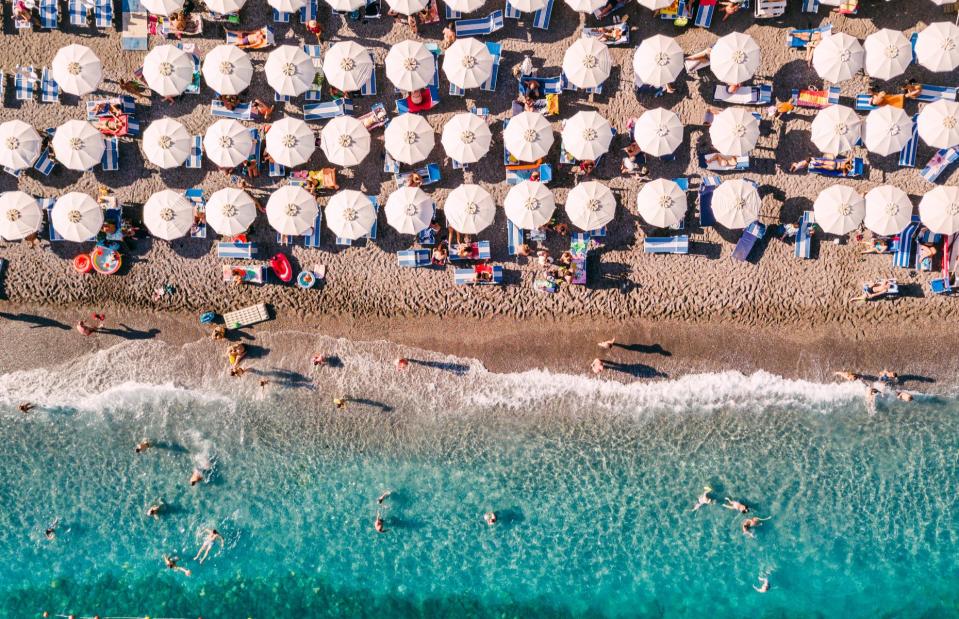
Andrea Gallucci/Shutterstock
The seductive southern Italian village of Positano, with its colourful buildings perched atop vertiginous headlands, is a photographer’s dream. Pictured here, the main beach makes for a striking sight from the skies, its satisfyingly symmetrical rows of white parasols standing out against golden sands and azure seas, while beach-goers’ brightly coloured towels and inflatables provide pops of colour.
Grüner See, Austria
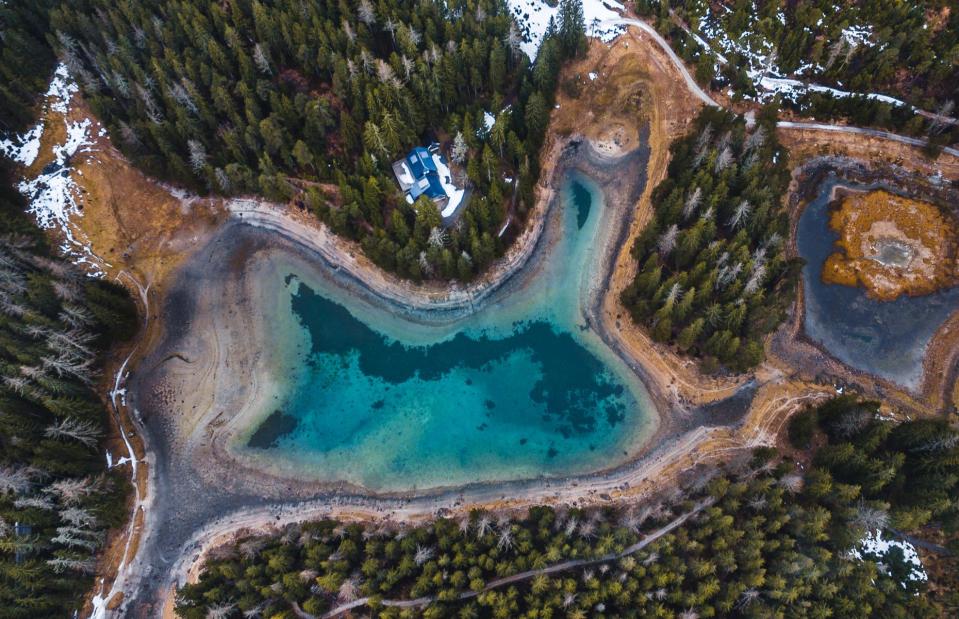
Attila Csipe/Shutterstock
Living up to its name, Grüner See – meaning “Green Lake” in German – shows off its distinctive green-blue hue in this eye-catching drone shot. Located in the heart of Austria’s Hochschwab Mountains, the lake fills up with meltwater from the surrounding mountains by summer, while in winter the lake dramatically recedes to a depth of just 3ft 4in-6ft 7in (1 to 2m).
Porto Moniz, Madeira, Portugal
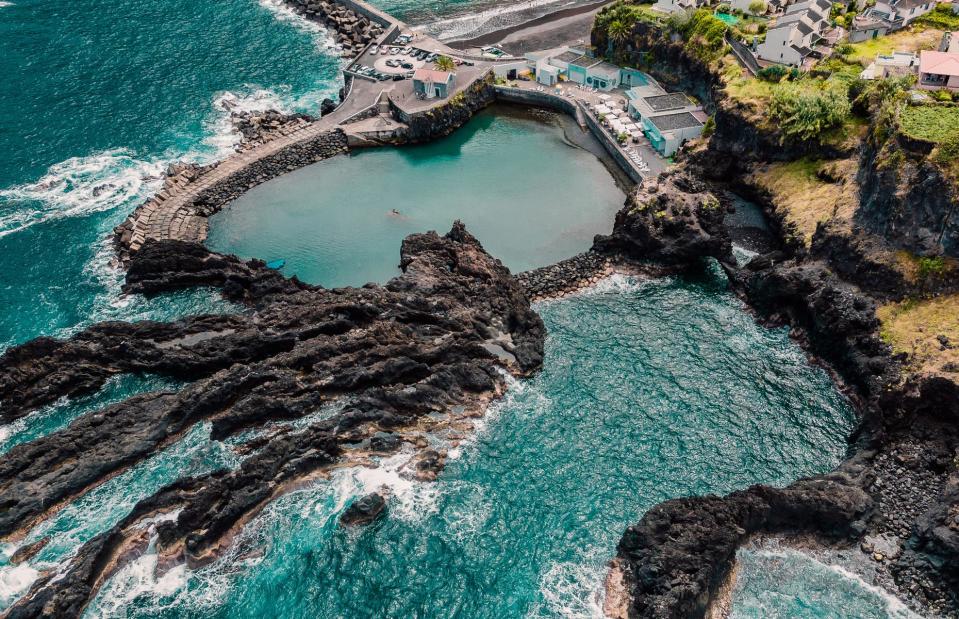
Svetlana Khovrina/Shutterstock
Formed by a phase of volcanic activity which began around a million years ago, Porto Moniz’s natural rock pools are fed by the Atlantic Ocean, spilling in to create perfect little pockets of azure water. Standing in stark contrast to the jet-black volcanic rocks, the lava pools are the main attraction in Porto Moniz, located on the northwestern tip of the Portuguese island of Madeira.
Dolomites, Italy

pio3/Shutterstock
Snaking through snow-capped woodlands in this enchanting aerial photograph, the Great Dolomites Road passes through the Dolomites from Bolzano to Cortina d’Ampezzo, offering plenty of sublime views. Built between 1895 and 1909, the ribbon-like stretch of road encompasses serpentine bends, dizzying climbs and perilous drops galore.
Plateau de Valensole, Provence, Southern France
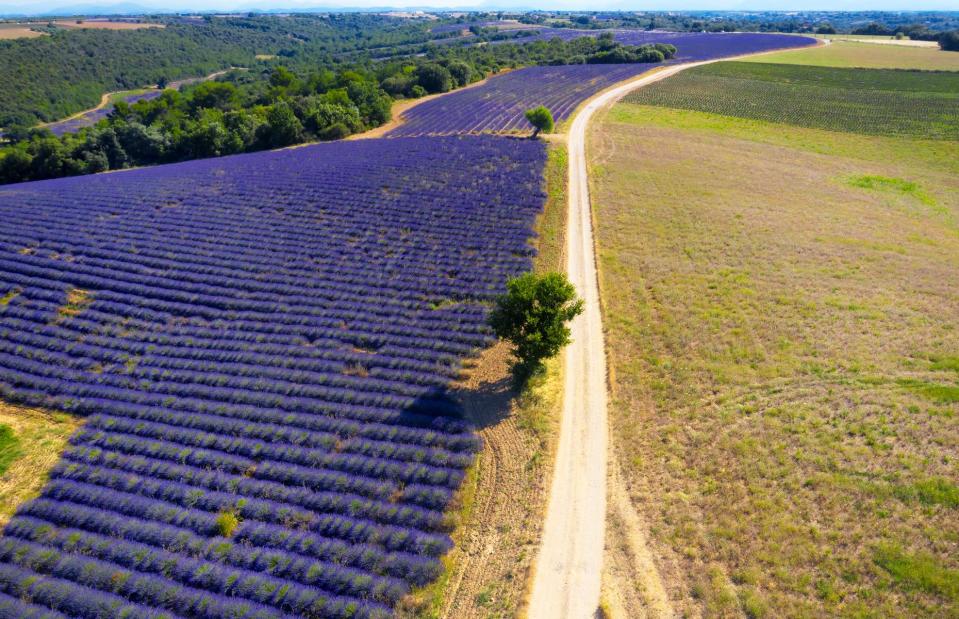
cate 89/Shutterstock
Practically synonymous with Provence, these dreamy pockets of lilac, contrasted with the arid yellow and verdant green hues of nearby fields, are simply mesmerising from the skies. The fragrant lavender crop has graced the South of France since as early as 600 BC, when it was brought by Greek traders from the Îles d’Hyères, and today, the Plateau de Valensole is among the region’s best-known lavender hotspots.
Las Salinas de Torrevieja, Spain
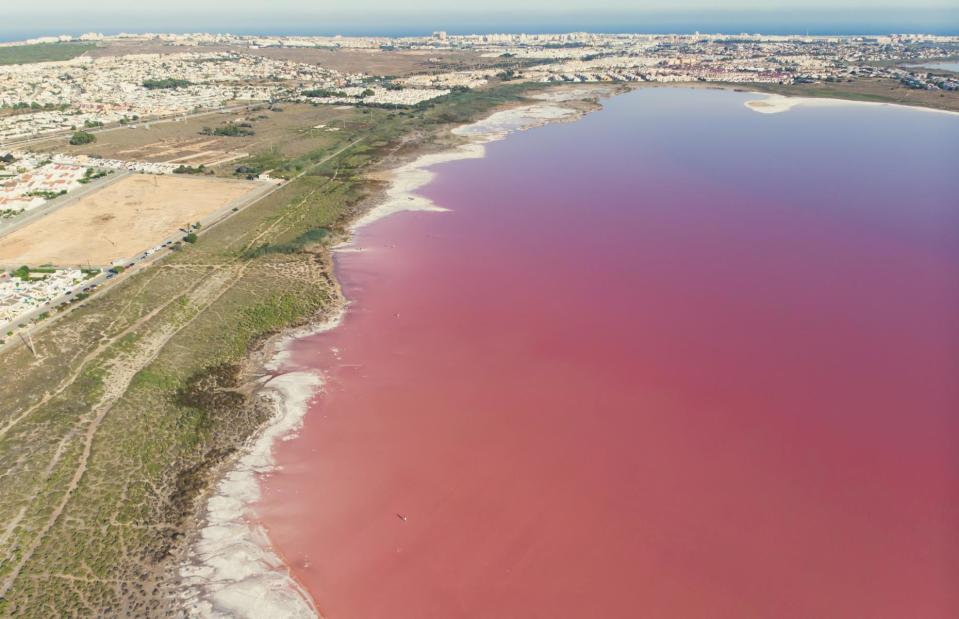
Tsuguliev/Shutterstock
The candy pink tones of southern Spain’s natural salt lakes come from the combination of a type of bacteria, halobacterium, with a type of seaweed, dunaliella salina. During the spring, the region is crowded by flamingos which come to feast on the water’s algae, harmonising perfectly with the rosy-hued water.
Blue Lagoon, Iceland
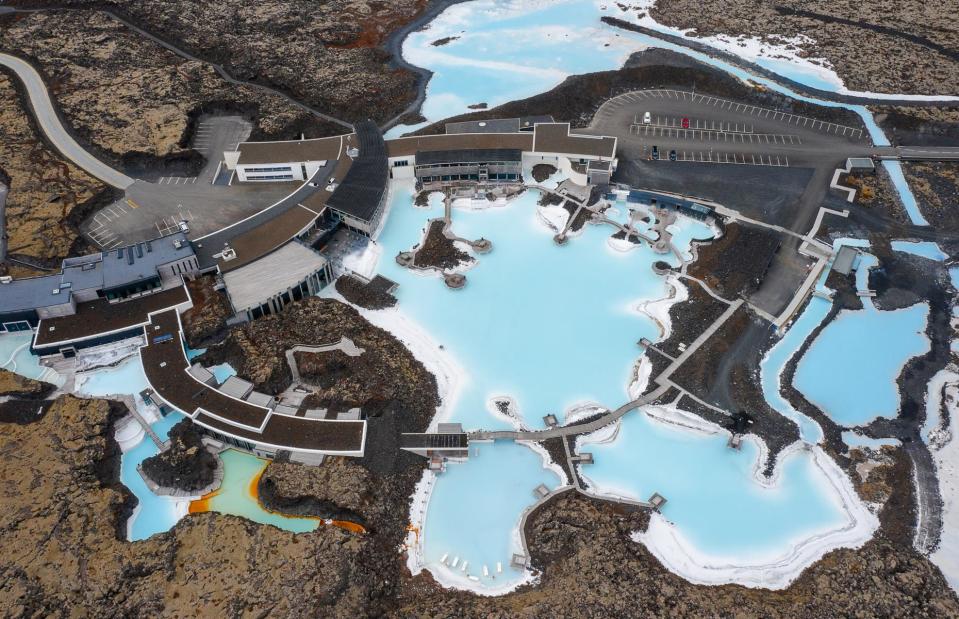
Vik-is/Shutterstock
Blue Lagoon’s almost pearlescent pale-blue hue comes from an abundance of silica in its waters, which reflects only blue wavelengths of light. Located in southwestern Iceland, the geothermal lagoon is flanked by dramatic volcanic rock, making this unusual Icelandic gem look almost as if it’s been plucked from another planet.
Florence, Italy
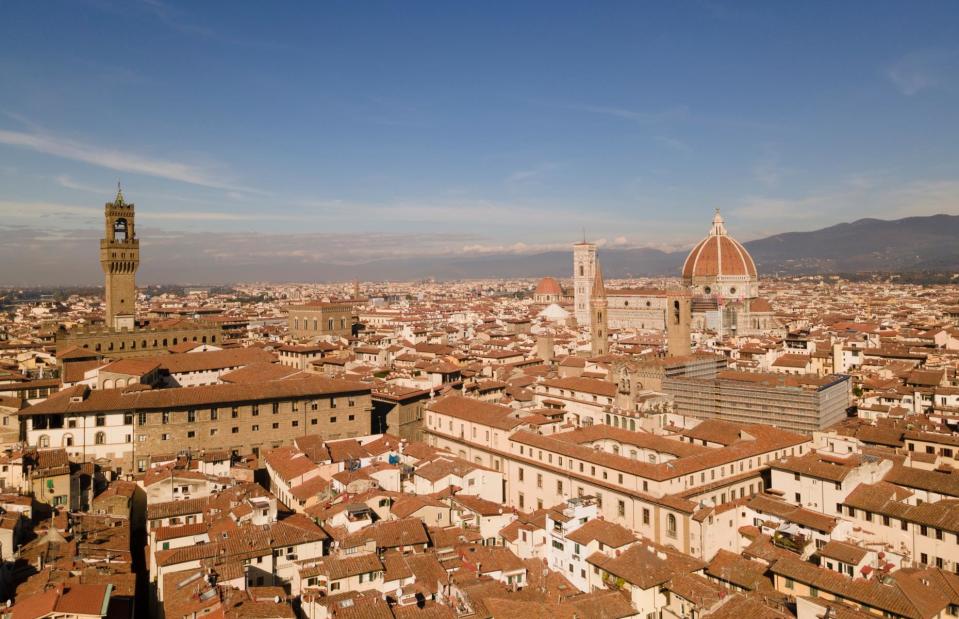
Giovanni Corti/Shutterstock
Surrounded by Tuscany’s rolling hills, Florence is a hub for Renaissance architecture and art, set within its labyrinthine streets and dusty-hued buildings. While it may not be possible to wander these storied streets right now, we can gaze upon the likes of Brunelleschi's Dome, its iconic cathedral, the spires of the Piazza della Signoria and Palazzo Vecchio, and its patchwork of pretty terracotta rooftops.
Henningsvær, Lofoten Islands, Norway

Nick Fox/Shutterstock
Home to the second ultra-remote football pitch in our round-up, Henningsvær is a traditional fishing village located on the southern side of Norway’s Lofoten Islands. With its idyllic wooden houses perched atop a rocky finger of land reaching out into ice-cold seas, this far-flung village is as secluded as they come.
Faroe Islands, Denmark
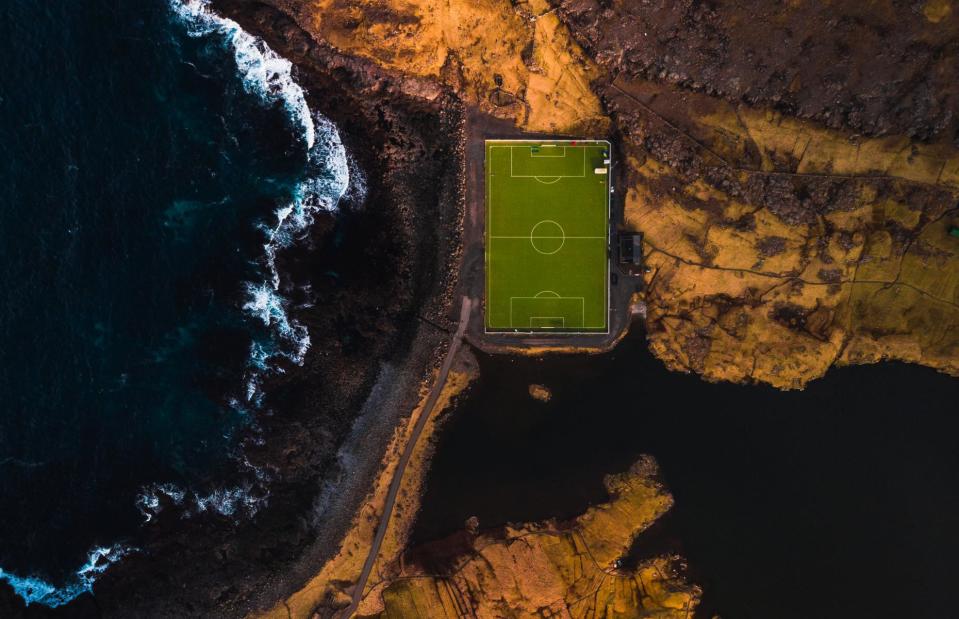
Yannik Photography/Shutterstock
Denmark’s Faroe Islands, an 18-island archipelago located in between Norway and Denmark, are home to an abundance of untamed landscapes. But in the tiny village of Eiði, on the island of Eysturoy, you’ll find an altogether more surprising landmark: a football field perched right on the edge of a perilous cliff. Although it’s no longer used for football as it’s been transformed into a campsite, it certainly makes for an unusual sight.
Salt Pans, Gozo, Malta
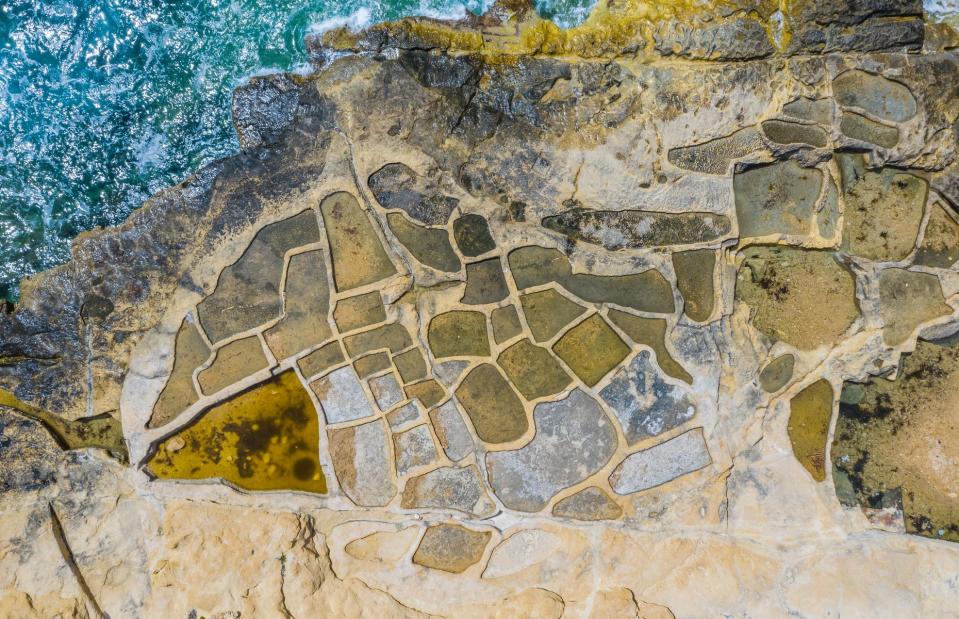
Karina Movsesyan/Shutterstock
An intricate mosaic of shimmering pools, Gozo’s 350-year-old salt pans are thought to be some of the world’s oldest. Salt is formed when seawater enters the pans, is left to settle for eight days and is then moved further from the sea – where the pans are warmer – before drying up and forming salt crystals. In this stunning aerial photograph, the salt pans are a kaleidoscope of earthy tones lapped by crystal-like waters.
Cinque Terre, Italy
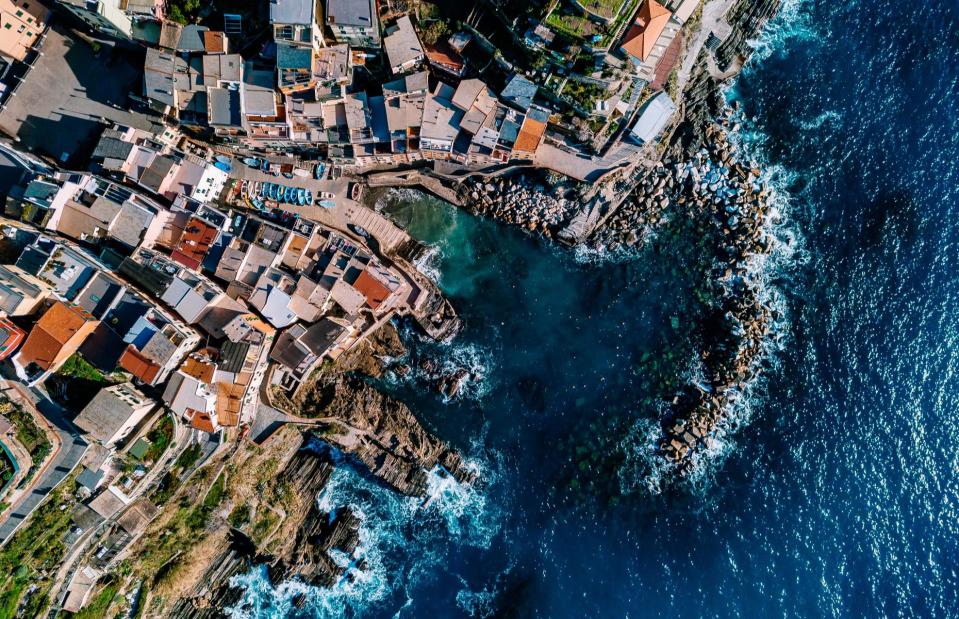
Ekaterina Kondratova/Shutterstock
Known for its vertiginous cliffs, rocky coves and dainty, colourful houses, northern Italy’s Cinque Terre is made up of five villages: Riomaggiore, Manarola, Corniglia, Vernazza and Monterosso. Pictured here is Riomaggiore, the region’s easternmost village, its pastel-toned rooftops and colourful wooden fishing boats set against deep blue waters.
Dubrovnik, Croatia
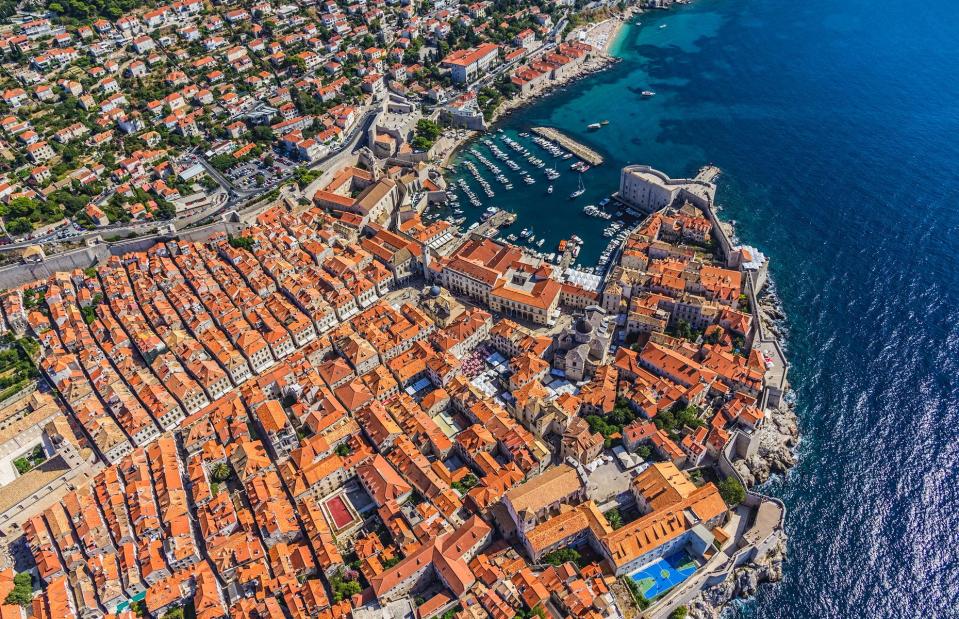
OPIS Zagreb/Shutterstock
The medieval walled city of Dubrovnik has earned film star status thanks to its appearance in movies and TV series including Game of Thrones, but it doesn’t need duels and dragons to bring it to life. Captured from above in this awe-inspiring shot, with its patchwork of terracotta buildings cradled by ancient limestone walls, the city looks as though it’s been plucked straight from a fantasy book.
Burano, Venice, Italy
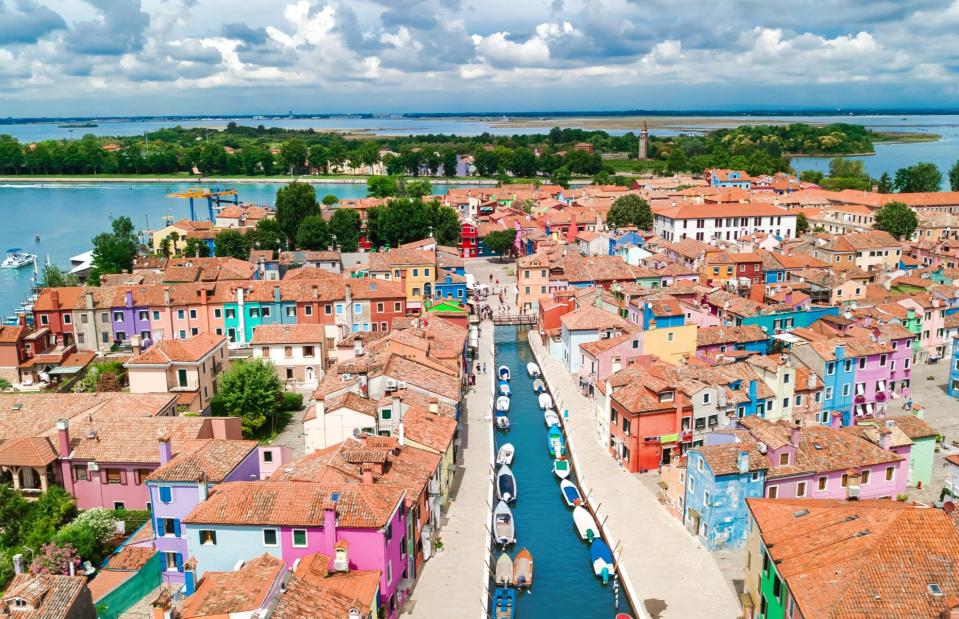
JaySi/Shutterstock
Venice is at the top of many travel fanatics’ bucket lists, but its lesser-known cousin Burano, a short hop away from Venice, is stunning in its own right. With a kaleidoscopic array of buildings painted in every colour of the rainbow, flanked by dainty canals dotted with fishing boats, this quaint little island packs in plenty of charm.
Cappadocia, Turkey
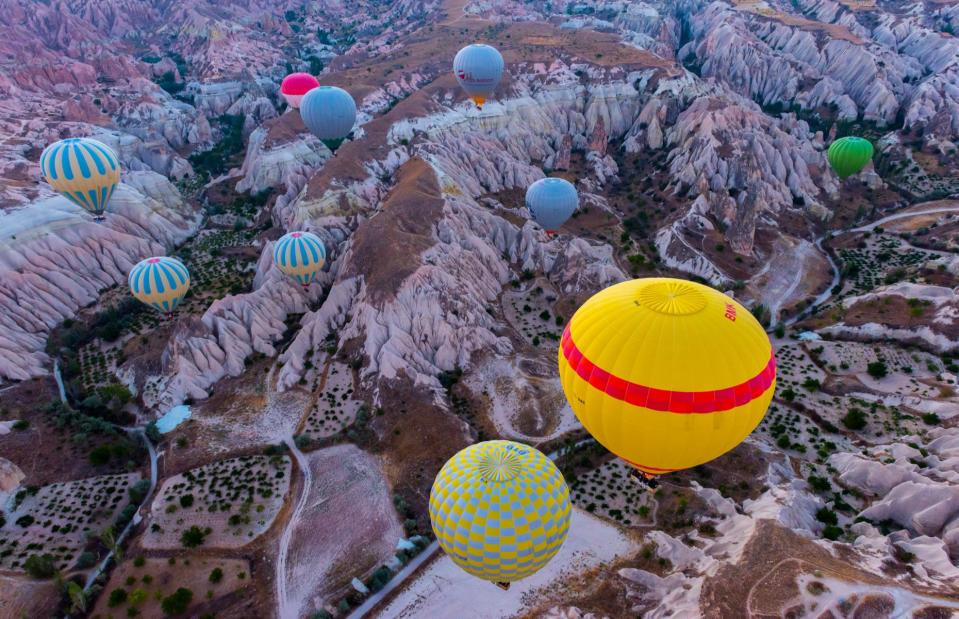
Resul Muslu/Shutterstock
While there's some debate about whether Turkey is technically in Europe or Asia, the towering, raspberry-ripple peaks of Cappadocia’s volcanic landscape are too stunning to leave out of our list. Not just a geological beauty, Cappadocia’s pleated valleys are also home to impressive architecture, including the Göreme Open-Air Museum with its churches carved into the rock, and a number of “cave hotels”. Around a hundred hot air balloons fly over each morning giving the region a fairy-tale feel.
Transfăgărășan, Romania
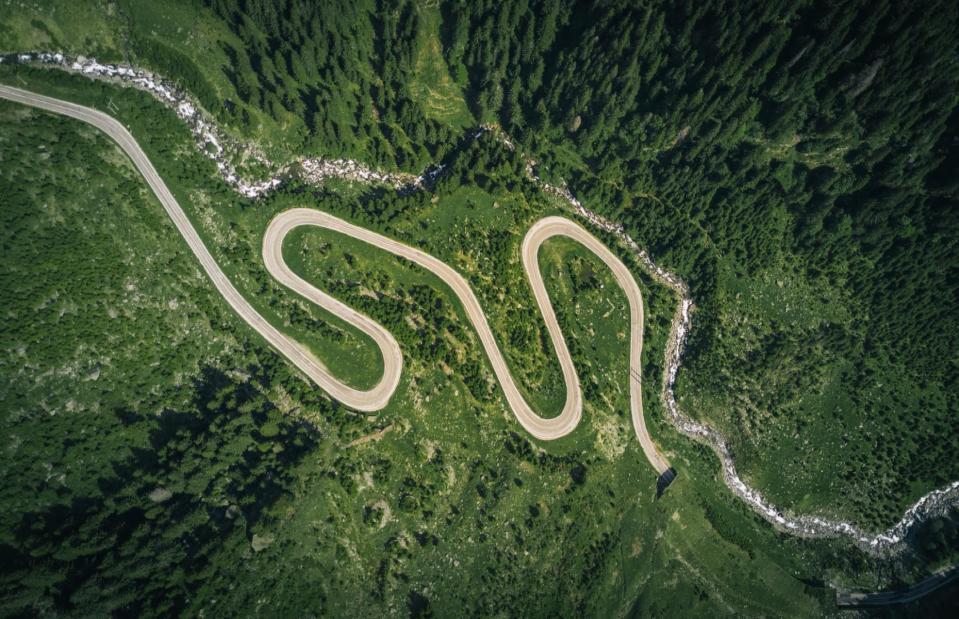
Jaromir Kavan/Unsplash
Weaving its way through Romania’s Fagaras Mountains, the legendary Transfăgărășan road is a stomach-churning mix of hairpin bends, taking in panoramic mountain views, thick forests and dramatic valleys. Regarded by motoring enthusiasts as one of the world's must-drives, this storied highway looks all the more impressive from above.
Meteora Monasteries, Kalabaka, Greece
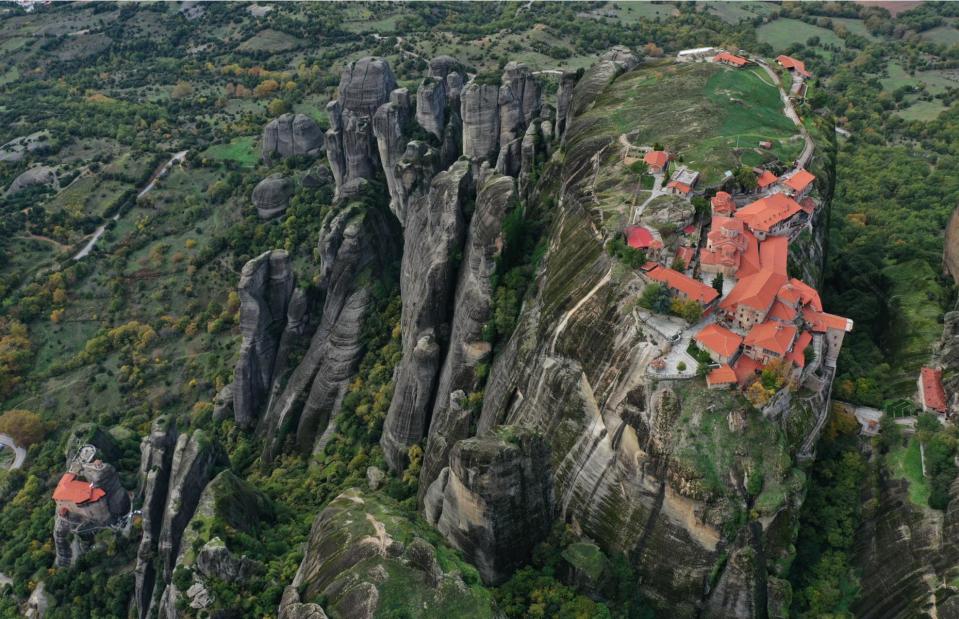
Dmitrii Postnov/Shutterstock
Perched on top of vertiginous sandstone pillars and boulders, the six Eastern Orthodox monasteries found in the plains of Thessaly, northwest of Kalabaka, have inspired visitors for centuries. In this awe-inspiring photograph, the monasteries’ precarious position and the cliffs’ impressive geology are enhanced by a drone’s-eye view.
Gullfoss Falls, Iceland
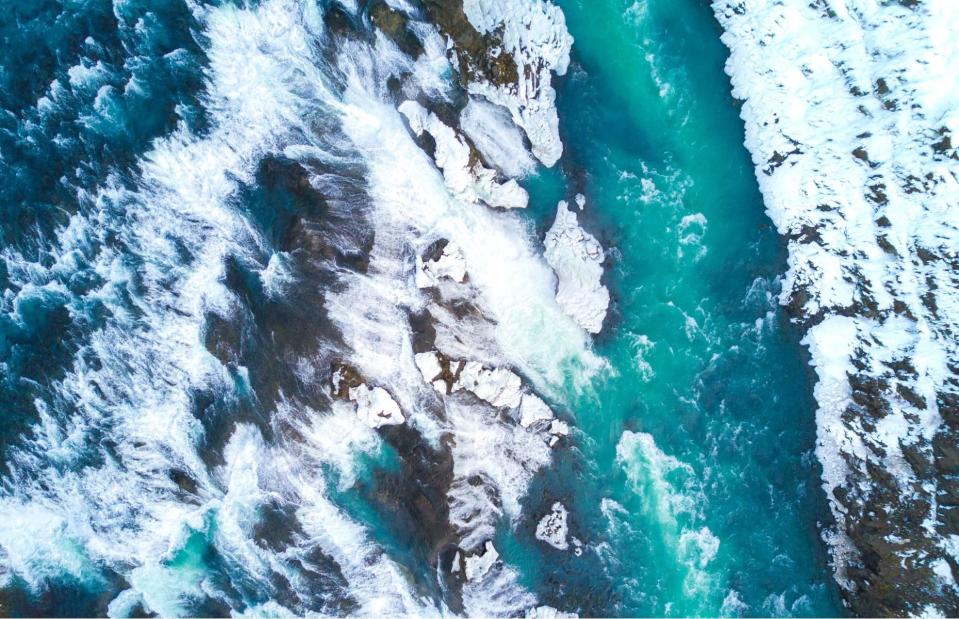
William Justen de Vasconcellos/Unsplash
Just from looking at Gullfoss’ fast-moving waters, you can almost feel their rapid pace. Comprising two separate drops of 36 feet (11m) and 69 feet (21m), the falls are among Europe’s most impressive. In this eye-catching aerial shot, the ripple of milky-white and sapphire-blue waters are completely mesmerising.
Zelenci Lake, Slovenia
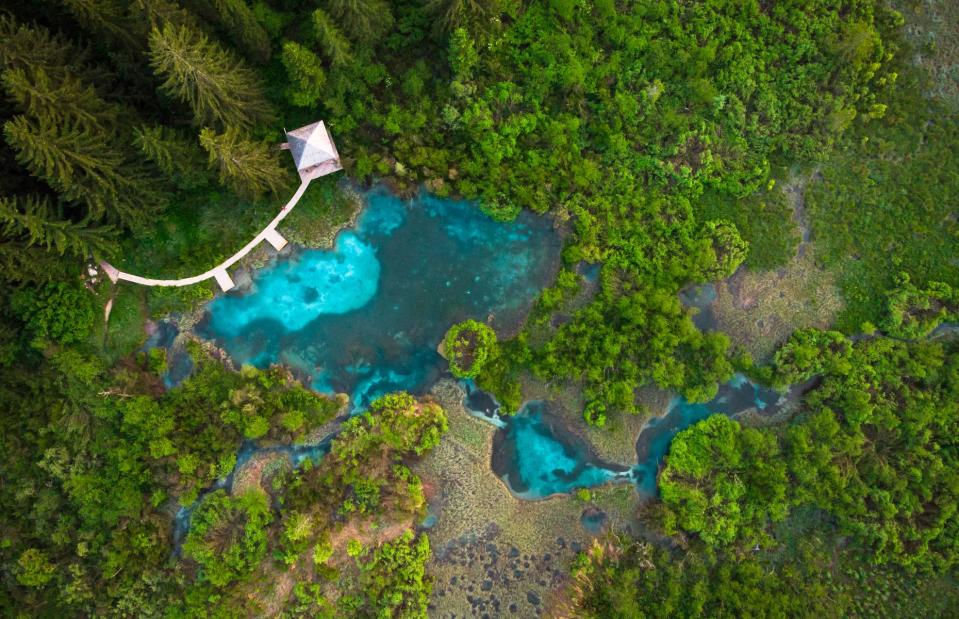
marcin jucha/Shutterstock
With its striking bright blue waters surrounded by lush green forest, Zelenci Lake is an impressive sight from above. Located in Zelenci Nature Reserve in northwestern Slovenia, the lake's striking colour comes from a natural spring that flows through the layers of sedimentary rock below.
Causeway Coast, Northern Ireland
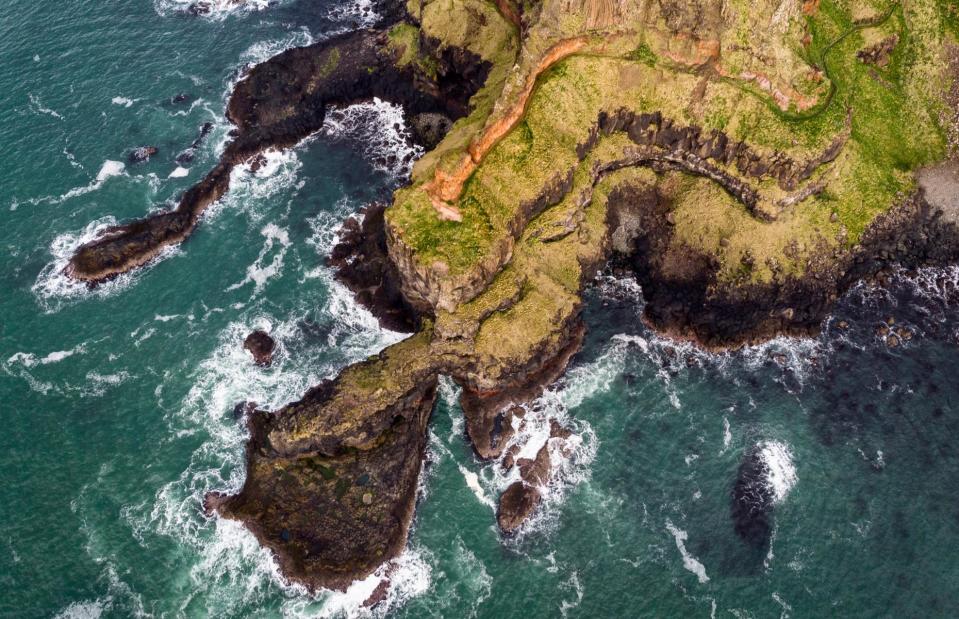
Gheorghe Popa/Shutterstock
Few locations on earth have quite such rugged charm as Northern Ireland’s Causeway Coast, a glorious stretch of coastline encompassing impressive landforms, medieval castles and cliff-side roads – as well as the famous Giant’s Causeway. In this aerial photograph, the region’s elemental beauty is captured in its dark basalt rock and crashing waves.
Colonia Sant Jordi, Mallorca, Spain
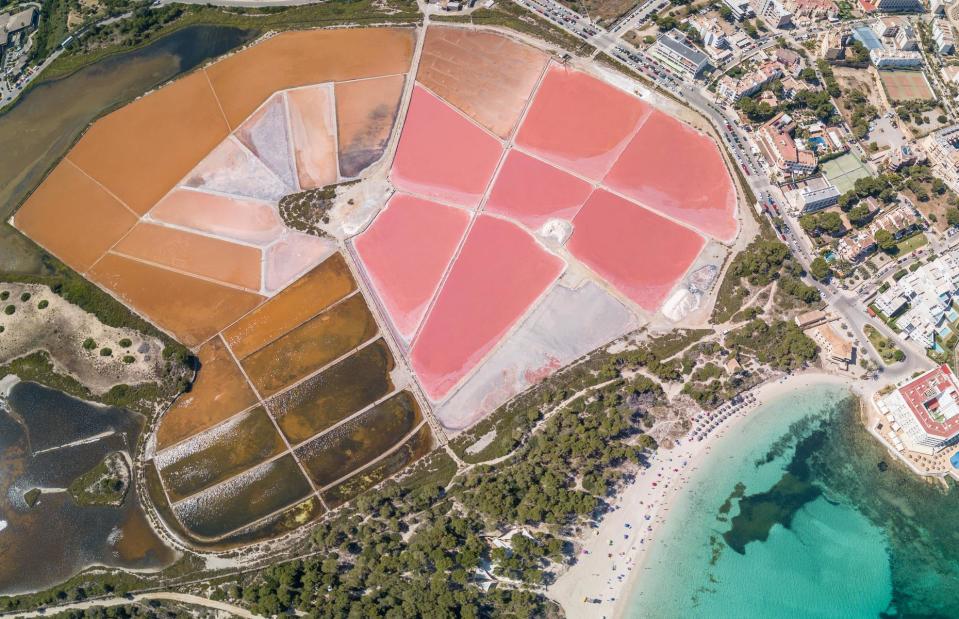
MC MEDIASTUDIO/Shutterstock
Resembling a magnificent paint palette of corals, pinks, and browns, the salt lakes of Colonia Sant Jordi are spectacular from the skies. Situated on the south coast of Mallorca, more than 10,000 tonnes of speciality “Flor de Sal” sea salt are mined from here each year.
Keukenhof, Netherlands
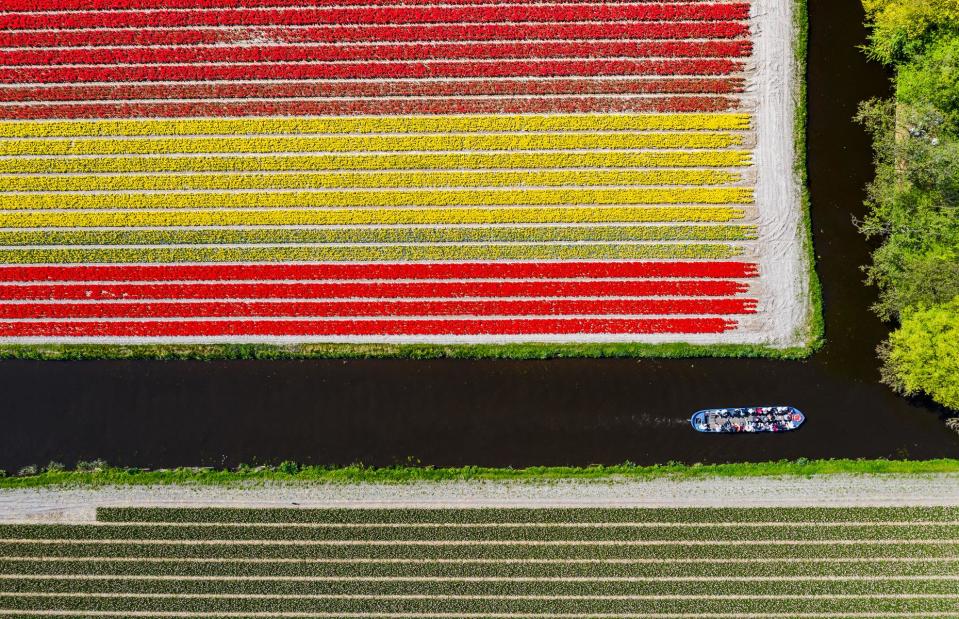
Dave Z/Shutterstock
The perfectly symmetrical stripes of Keukenhof’s colourful flowers, of which an enormous seven million are planted each year, look almost as if they’ve been painted onto the ground. Located in Lisse, between Amsterdam and the Hague, Keukenhof is the largest flower park in the world and home to a vast array of pretty blooms, including tulips, daffodils, roses, irises and lilies.
Oulanka National Park, Finland
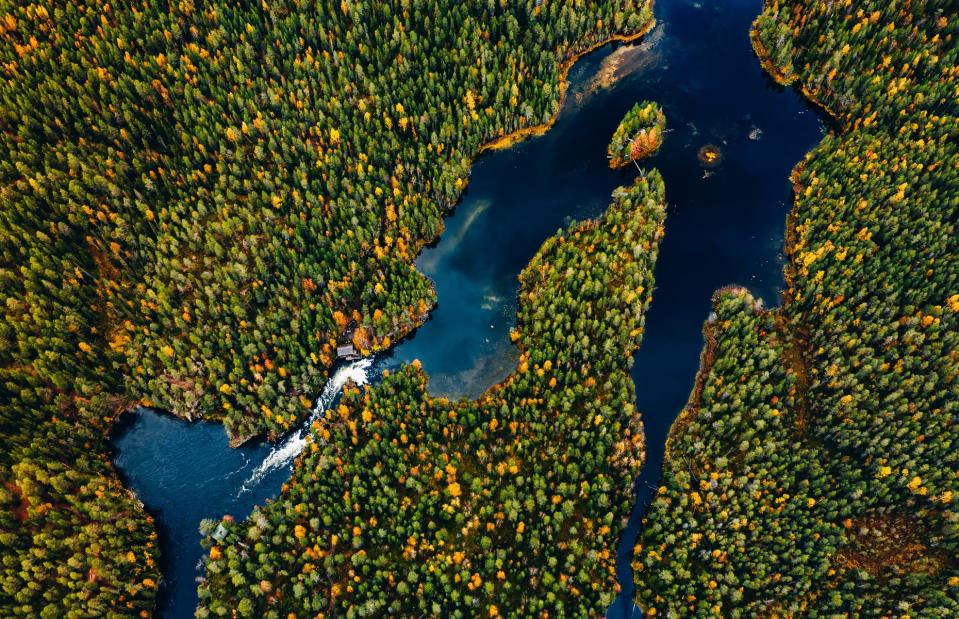
Ekaterina Kondratova/Shutterstock
Captured on the brink of autumn here, its lush green canopy of trees beginning to be peppered with golden hues, Oulanka National Park is known for its vast array of wildlife, impressive gorges, rushing rapids and more. Situated in the remote Northern Ostrobothnia and Lapland regions, the park is the epitome of untamed wilderness.
Santorini, Greece
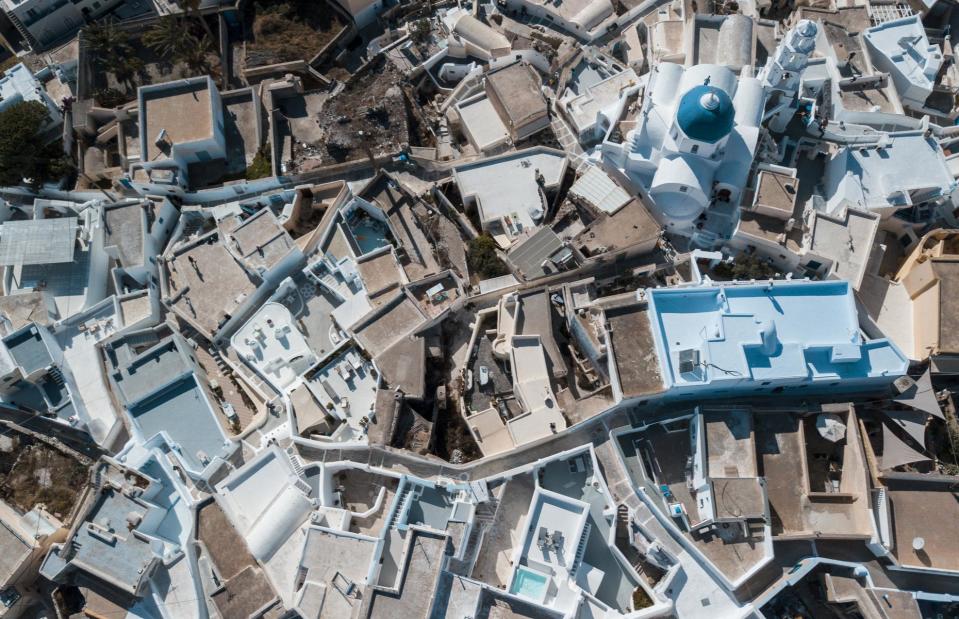
Jan Jenka/Shutterstock
Best known for its picturesque whitewashed buildings, Santorini’s rooftops and balconies take on a whole different allure from the skies, resembling an intricate mosaic. The Greek island, located on the southern side of the Aegean Sea, was formed by a volcanic eruption thousands of years ago, which helped to form its crescent shape.
Hverir Geothermal Area, Iceland

A. Aleksandravicius/Shutterstock
Iceland is known for its geothermal activity – in fact, geothermal power currently accounts for one-quarter of the country’s electricity production. Yet this renewable power source also happens to be exceptionally beautiful, too: just look at this aerial shot of Hverir Geothermal Area in northern Iceland, a mesmerising mix of striking mineral hues, mud pools and bubbling groundwater.
Lake Eibsee, Bavaria, Germany
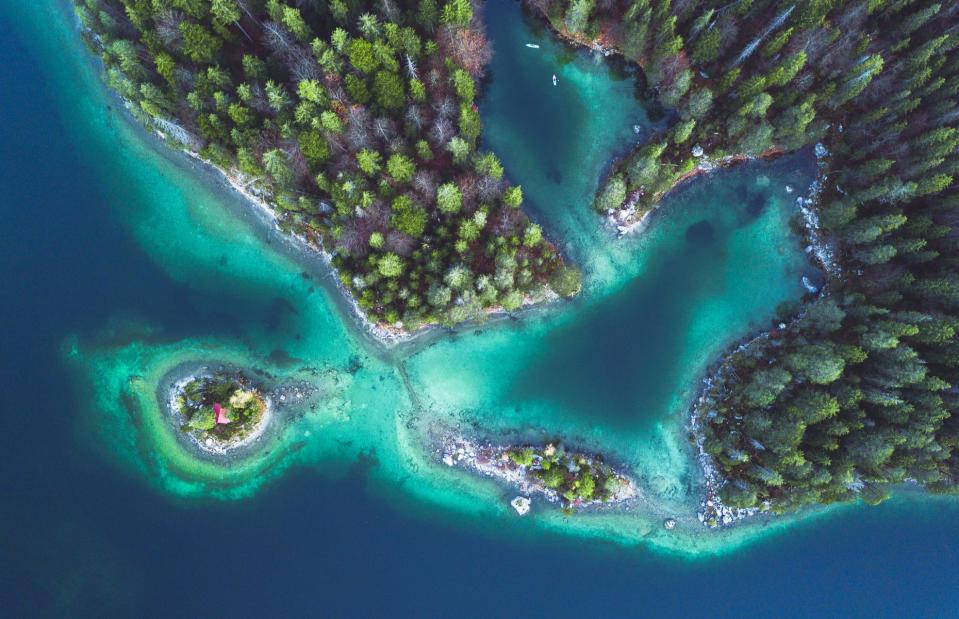
Claudiu Maxim/Shutterstock
Located at the foot of the Zugspitze mountain in Bavaria, Lake Eibsee is known for its crystal-clear, jewel-toned waters. The lake was formed by a rock fall, which created a large basin, during the last ice age, and it has eight tiny islets scattered around its northern side.
Arc de Triomphe, Paris, France

Serguei Koutaitsev/Shutterstock
Many tourists clamber up the 284 steps of the Arc de Triomphe to peer out at 360-degree views across Paris, but perhaps they’re missing a trick. The 19th-century arch itself looks pretty spectacular from the skies, sitting in the centre of a circular plaza, the grand avenues radiating outwards from it to create a 12-pronged star.
Path of the Dragon, Laax, Switzerland
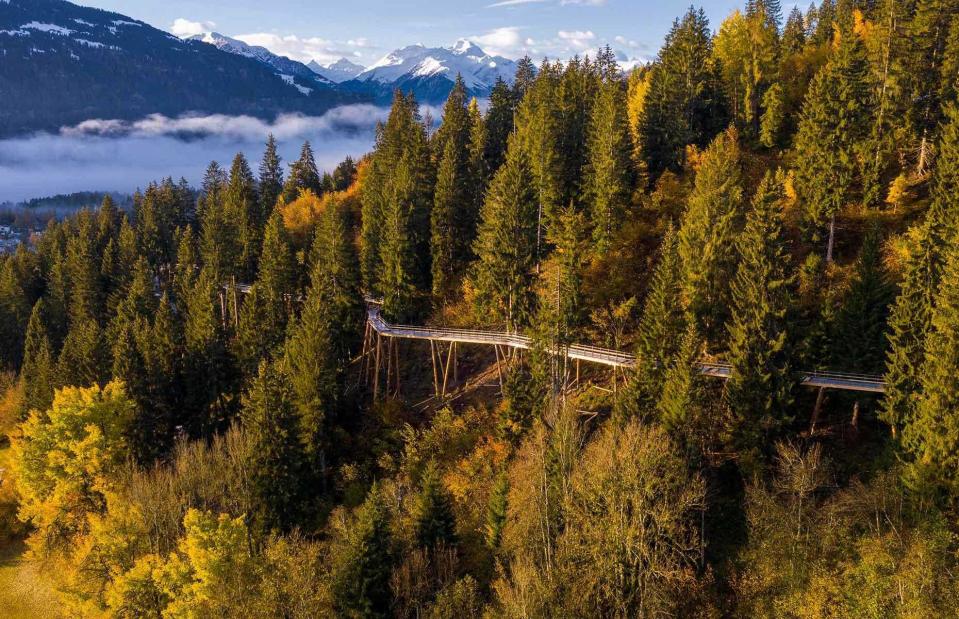
Philipp Ruggli/LAAX
This July, the Swiss ski resort town of Laax gained a stunning new attraction: the Path of the Dragon. This 0.97-mile (1.56km) walkway, perched as high as 92 feet (28m) above the ground at the highest point, is the world's longest treetop walkway. It's the perfect spot for admiring the region's breathtaking alpine views – but it's also a sight to behold from above, with the wooden path spiralling its way through a thick carpet of greenery.
Route des Crêtes, Gorges du Verdon, France

Dimitri Weber/Shutterstock
Winding its way along the cliffs in a panoramic loop around the Gorges du Verdon, the vertiginous twists and turns of the Route des Crêtes look all the more dramatic from a drone’s eye view. The 14-mile (23km) stretch of road offers plenty of viewing spots for gazing out at the sparkling waters of the gorge below.
Eixample, Barcelona, Spain
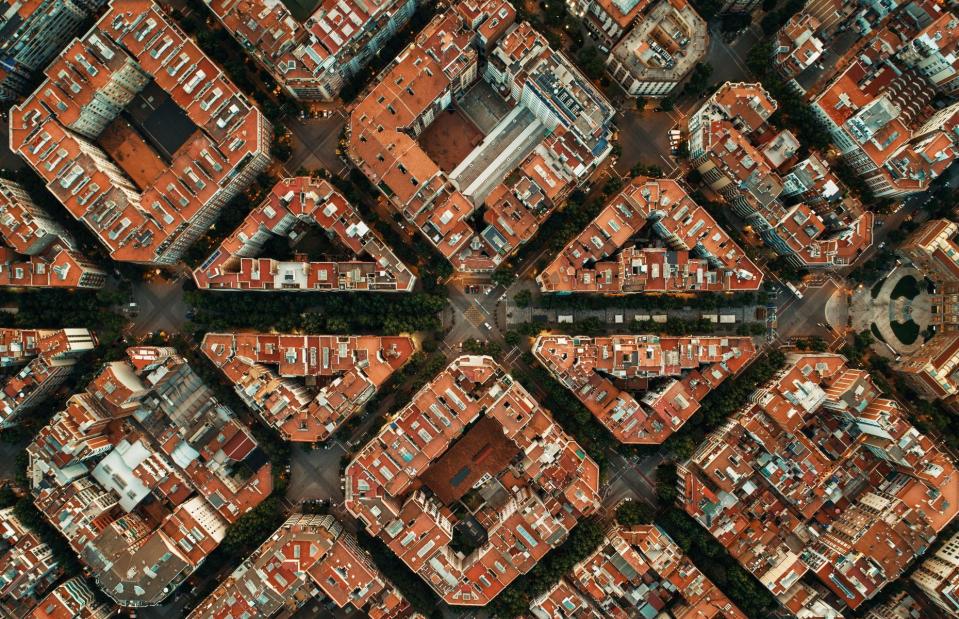
Songquan Deng/Shutterstock
While the oldest streets of Barcelona may be an eclectic web of Gothic, modernist, and whimsical Gaudí architecture, in stark contrast, the layout of its Eixample district is extremely orderly. Owing its grid pattern to Spanish urban planner Ildefons Cerdà, who wanted to overcome the city’s overcrowding problem during the 19th century, the octagon-shaped blocks were designed to maximise sun exposure and improve air circulation around the streets.
Old Town Square, Prague, Czech Republic
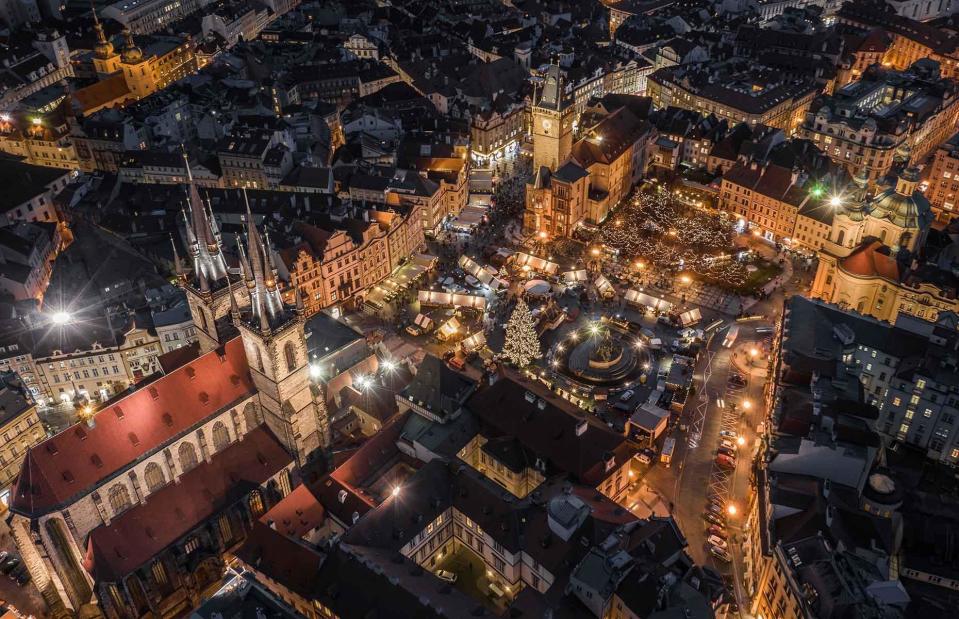
ZGPhotography/Shutterstock
The Czech capital looks beautiful from almost every angle, but this overhead shot of its much-loved Christmas market in the Old Town Square sparkles with festive excitement and cosy gatherings. You'll notice that most of Prague's architecture is Baroque and Gothic, with a healthy smattering of Romanesque, Renaissance and Rococo too. Head up to Petřin Hill to see for yourself why Prague is nicknamed the city of a hundred spires.
Now see other parts of our wonderful planet photographed from above

